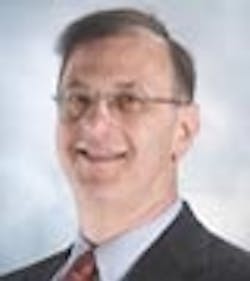[pullquote]
Process plants generally operate for many decades, if not longer. However, pressures, either economic, technical or social, eventually doom many sites. The era when a manufacturer could simply abandon a facility without concern for what it left behind thankfully is long gone in the United States and elsewhere. Instead, an operating company faces all sorts of challenges in dealing with these inevitable shutdowns. As this issue’s article “Safely Decommission and Decontaminate Plants,” stresses, properly preparing a site for demolition (or even mothballing if some prospect of a future restart exists) demands careful organization and execution.
While many chemical plants sprawl over large plots and keep most production operations outside, some facilities, including many that make pharmaceuticals, largely locate their processes inside buildings. Such sites, after decommissioning, decontamination and removal of process equipment, may secure surprising second lives.
One such case that immediately comes to my mind is the former factory of Pfizer, Inc., at 630 Flushing Avenue in Brooklyn, N.Y. The company was founded in that area in 1849, and built a massive (about 600,000 ft2) eight-story complex there in 1940. Pfizer ceased operations at the site in 2008.
The age of the plant undoubtedly undermined its long-term viability. In addition, like many inner-city factories, the surrounding neighborhood had deteriorated over the years before the shutdown. However, the ongoing revitalization of previously blighted areas of Brooklyn has sparked increasing interest in the complex. Acumen Capital Partners, Brooklyn, bought the complex in 2011 and, since then, has fully renovated the space and lured a diverse variety of tenants to the site. Right now, occupancy exceeds 90% and more than 100 tenants call the complex home, says Ashish Dua of Acumen.
For instance, notes Dua, the hygienic features found in certain areas such as laboratories, e.g., washable floors and walls, makes those spaces attractive for artisanal food manufacture. CookUnity, a service that prepares gourmet meals for some noted chefs for direct delivery to consumers across the United States, now occupies about 80,000 ft2 of former laboratory space for its kitchens.
Also in the complex is Silver Spoon Animation, a company that does real-time animation and virtual production for films, television, games, etc. In addition, the Trapeze School of New York operates a year-round facility there that offers lessons on flying trapeze, trampoline, aerial hook and other acrobatic activities.
More down-to-earth tenants include Square Roots, an urban farming initiative, and a number of nonprofit groups.
Even the parking lot has gotten a fresh use. Square Roots operates its farming campus there. In addition, Revel, a Brooklyn company focused on electric vehicles, chose the site for the largest universal fast-charging depot in the country. Open 24/7, this “superhub” contains 25 75-kW units that can fast charge any brand of electric vehicle.
Granted, Brooklyn attracts a somewhat more eclectic variety of businesses than other areas, but the success in bringing new life to the former Pfizer plant still shows that repurposing often deserves consideration. After all, reuse not only preserves physical assets but also bolsters the economic vitality of an area by providing new jobs to replace at least some of those lost.
About the Author
Mark Rosenzweig
Former Editor-in-Chief
Mark Rosenzweig is Chemical Processing's former editor-in-chief. Previously, he was editor-in-chief of the American Institute of Chemical Engineers' magazine Chemical Engineering Progress. Before that, he held a variety of roles, including European editor and managing editor, at Chemical Engineering. He has received a prestigious Neal award from American Business Media. He earned a degree in chemical engineering from The Cooper Union. His collection of typewriters now exceeds 100, and he has driven a 1964 Studebaker Gran Turismo Hawk for more than 40 years.

